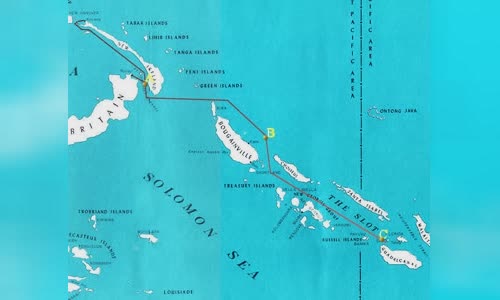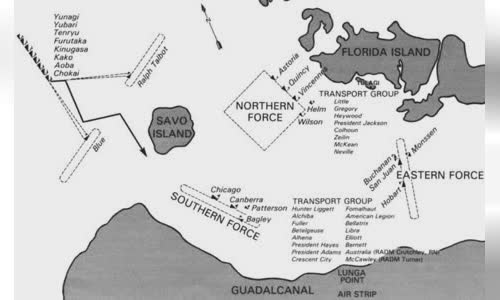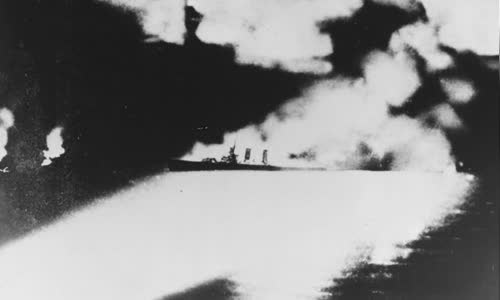A series of tactical and command mistakes caused the US heavy losses to the Japanese in a swift naval battle near the island of Savo in 1942.
The Ironbottom Sound area near the Solomon Islands in the Pacific Ocean is considered to be one of the largest battleship graves in the world, because it buried about 50 battleships during World War II.

Path of the Japanese warship group to reach Savo Island Photo: Wikipedia
In August 1942, Allied forces with the core of US marines landed on Guadalcanal, Tulagi and Nggela islands in the eastern part of the Solomon Islands to block Japanese troops, while also controlling logistics and communication between
On 7 August, Allied troops landed on the islands with the support of the Australian Coast Guard and US forces with 8 cruisers and 15 destroyers led by Rear Admiral Victor Crutchley.
The Japanese Navy decided to deploy a coping force of seven cruisers and one destroyer under the command of Vice Admiral Gunichi Mikawa.
On August 8, Japanese warships took refuge in Bougainville Island and deployed reconnaissance aircraft, and they quickly discovered that the US fleet was divided into three groups stationed near the Solomon Islands.
Vice Admiral Gunichi Mikawa suggested that the Japanese could destroy a group of warships before the rest of the US fleet could assist.
The US Fleet had earlier been warned that Japanese warships were present in the area.
1:42 on 9/8, the Japanese army began to attack.

The location of the Japanese warship group (left) and the three groups of American warships dawned on August 9, 1942 Photo: Wikipedia
USS Patterson chased enemy ships, fired several hits, but could not fire torpedoes.
By this time, the Japanese warships had their sights set on the target and moved from unexpected directions from the US Navy, and began firing at the US warship at a distance of only a few kilometers.
Australian Captain HMS Canberra was killed in the first salvo, and the ship lost its ability to fight shortly thereafter.
Cruiser USS Chicago was hit by a torpedo and the bow was almost completely blown away.
The location of the Japanese warship group (left) and the three groups of American warships dawned on August 9, 1942.
The Japanese warships finished fighting at 1:44, just two minutes after they opened fire.
The maneuvering process of the Japanese fleet did not match, allowing US forces in the north to grasp the situation of the battle.

USS Quincy was shone by Japanese warships and fired shells Photo: Wikipedia
At 1:50 am, heavy cruiser USS Vincennes discovered the target while patrolling but still could not identify the enemy.
Japanese cruisers fired on the port of the Vincennes, shells penetrated the armor, destroyed an aircraft and set fire to the hull.
At the same time the Vincennes confronted the Japanese fleet, the heavy cruiser USS Astoria also detected the Japanese battleship and issued a battle readiness.
The Japanese heavy cruiser Chokai repeatedly fired at Astoria and hit the target with a fifth round of fire, piercing the superstructure and the bridge.
The heavy cruiser USS Quincy was also attacked and suffered the worst damage in the battle.
The Japanese warship group only stopped attacking and retreated at 2:15 am.
This failure prevented US Marines on Guadalcanal from being resupply for three months despite capturing Henderson Field.
The naval battle of Savo Island lasted only a total of 37 minutes, but was considered the worst defeat in US naval history, ahead of the Pearl Harbor raid in late 1941. A tactical and tactical analysis.



 Nancy Ward
Nancy Ward







